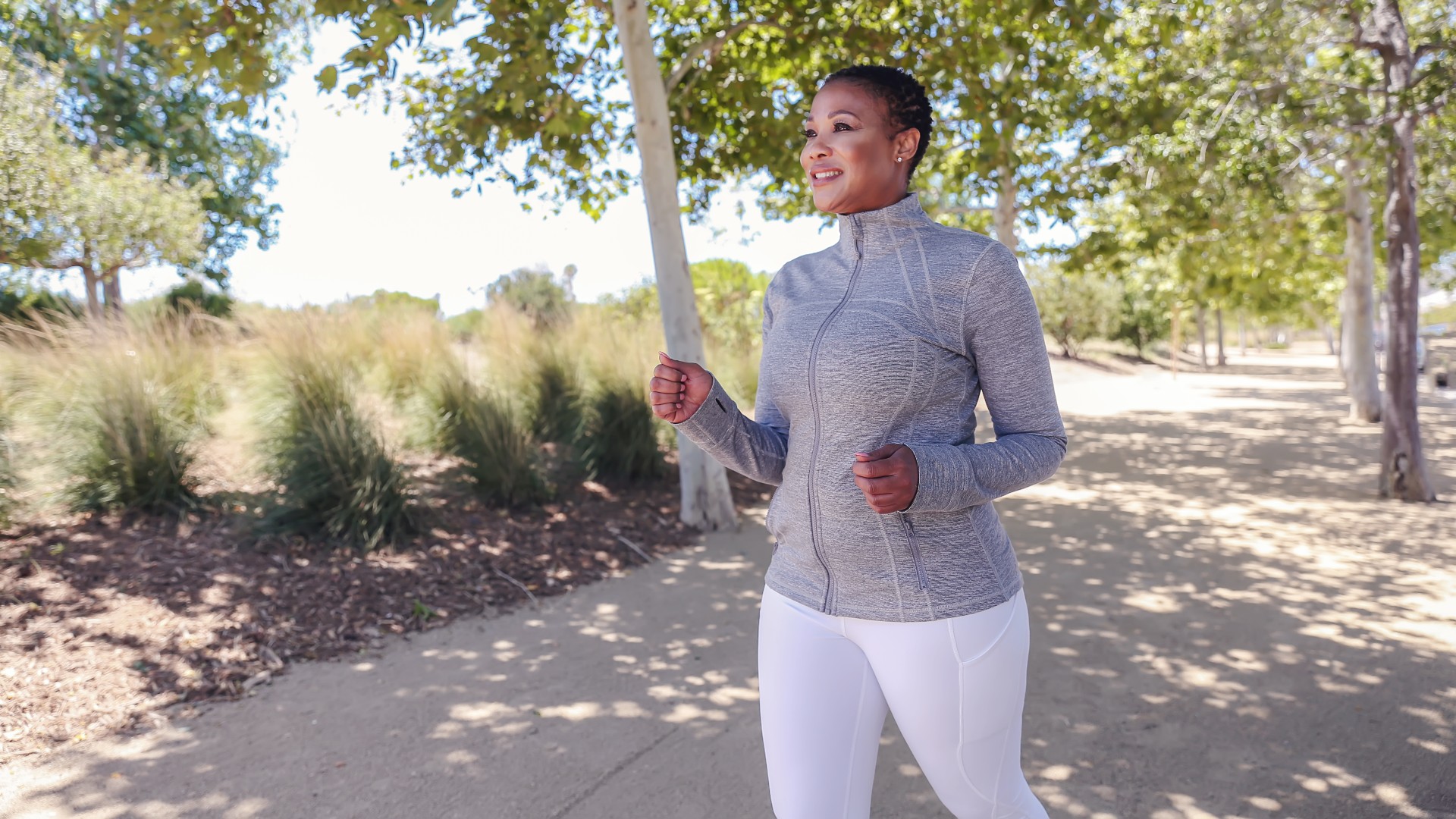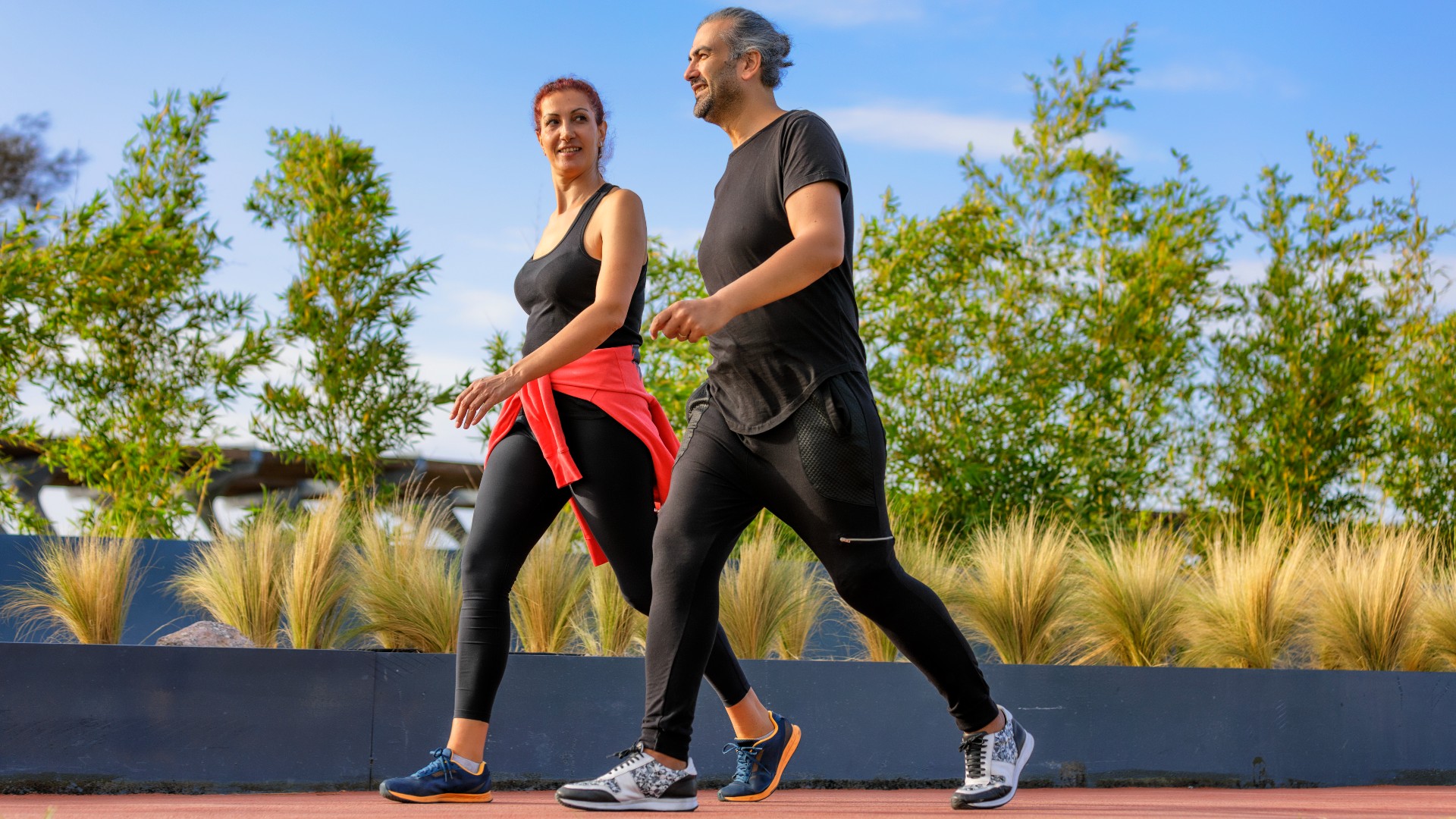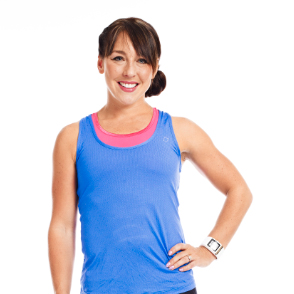Power walking: how to perfect your technique
Power walking is back — here's how to do it properly, so you can take full advantage of its health benefits


Power walking became a big hit in the late 1980s and early 1990s, but thanks to the #HotGirlWalk Tiktok trend its seeing an increase in popularity again. The trend sees people dropping the intense HIIT sessions in favor of speedy walks around their neighborhood
Emphasizing speed and arm motion, it has a lot of health benefits when done correctly, including giving your cardiovascular and joint health a boost, and positively impacting your mental and emotional wellbeing. As with any form of exercise, it’s important to practice the proper technique to ensure you reap the many rewards and reduce your risk of injury.
Want to get it right? Make sure you're geared up with the best shoes for walking. And follow these simple tips and tricks if you want to nail the right technique.
What is power walking?
“Power walking is a form of walking which requires you to pop on those walking shoes and move at a moderate to vigorous effort,” says Helen O’Leary a chartered physiotherapist, Pilates instructor and founder of Complete Pilates.
“It’s a walk that will leave you out of breath and will get your heart rate up and usually at a speed of 3 mph to 5 mph — although some power walkers reach speeds of 7 to 10 mph!”

Helen O’Leary is a chartered physiotherapist, Pilates instructor and founder of Complete Pilates, London. Helen graduated from Birmingham Unversity in 2008 and in 2010 completed her Pilates Rehabilitation course before teaching both mat and equipment Pilates. Helen then started her career as a physiotherapist in professional men’s rugby and with Cirque du Soleil before settling back in London to start her own business – Complete Pilates.
How do you do it?
There is no magic figure — or formula when it comes to power-walking but 10,000 steps is a reasonable aim when built into your day-to-day lifestyle. And while “government guidelines recommend we get in 150 minutes of moderate-intensity aerobic exercise a week, we don’t have to do that all at once,” explains O’Leary.
“To get started, all you simply need is your legs — and a little motivation, and once out the front door, it’s up to you and how you feel as to how you build up your speed and distance,'' says O’Leary.
Start your week with achievable workout ideas, health tips and wellbeing advice in your inbox.
“Start by making each stride short and nimble while pumping your arms and keeping your elbows bent at a 90-degree angle, then as you swing your arms, and move through your feet from heel to toe, you also need to make sure you engage your core as you gradually increase your speed and distance.”

In terms of timed daily walking targets, you should choose something that suits your fitness level. But if you're looking for inspiration, the latest research provides an interesting starting point.
One study showed that women who walked between 50-70 minutes just three days a week for a total of 12 weeks lost an average of 1.5% body fat and 1.1 inches around their waists.
And another study published in Diabetes Care found that inactive people over 60 years old, who walked for 15 minutes three times a day after meals, saw a huge difference in their blood sugar levels — in fact, this approach actually offered better health results than walking once a day for 45 minutes.
What are the benefits of power walking?
A walk is a great way to clear your mind, fill your lungs with fresh air and leave you calm and happy. “It’s also a form of exercise that requires no expensive equipment, no special athletic ability, no apps or technology, and no gym membership — and is one of the oldest and simplest forms of exercise on earth, yet so so beneficial,” says O’Leary.
Doctors have known for some time that brisk walking can reduce your risk for high blood pressure, high cholesterol, and diabetes — and the National Cancer Institute also found that engaging in regular, moderate to intense physical exercise like power walking lowers your risk for several cancers, especially bladder, colon and breast.
Power walking is also good for your bones and a recent study found an hour per day of moderate-intensity exercise like power walking prevents disability in people who have symptoms of joint problems in their lower extremities.
Is power walking good for weight loss?
“Power walking engages the entire body, burning calories and getting your heart rate up,” explains O’Leary. “A power walker can burn approximately 564 calories per hour while a regular walker, walking at a pace of 3-3.5 miles per hour will burn 340 calories an hour. These extra 224 calories will all add to faster weight loss — plus there’ll also be a slight after-burn effect, known as EPOC [excess post-exercise oxygen consumption] where your body will continue to burn calories even after your walk is finished.”
To support this Korean experts found that taking more steps per minute can have a positive impact on your insulin level, body mass index, and waist circumference, while helping you lose weight, especially belly fat.

Is power walking better than slow and steady walks?
“Although normal speed walking will still give you benefits like improved cardiovascular fitness, muscular strength, glycaemic control and stress management, walking even faster — AKA power walking — demands so much more from our cardiovascular system because it requires more steps per minute and a higher heart rate over regular walking. This makes power walking a more intense cardiovascular workout that burns more calories than regular walking,” explains O’Leary.
The emphasized speed and arm motion will also tone your muscles in a shorter period while working your entire lower body and working your coordination and balance. As you go faster you have to be more mentally and physically switched on with better trunk and core stability to create a better movement foundation.
Lucy Miller is a Journalist, Level 3 Personal Trainer, Nutritional Advisor and Children’s Fitness Specialist. She holds fitness qualifications from NASM Training and Premier Training International and has been a fitness journalist and model for over 20 years.
Since going freelance in 2014, Lucy left Men’s Fitness Magazine to write for an abundance of top consumer titles such as Women’s Health, Women’s Fitness, Glamour, Top Sante, The Guardian and Runners World. She’s also extremely passionate when it comes to educating others about health and physical activity and loves inspiring and working with children and adults to help make fitness fun, sustainable and accessible.
In her spare time, Lucy is ever the sportswoman. Once a national gymnast, having won three national titles, she has also run a handful of marathons around the world and loves to test her physical and metal side with regular running and gym sessions, not to mention ballet, bootcamp, boxing and TRX.
